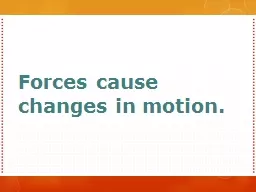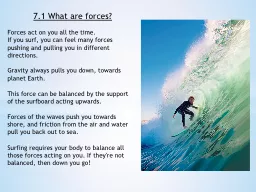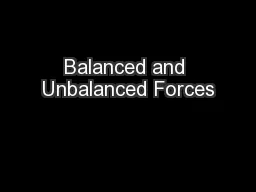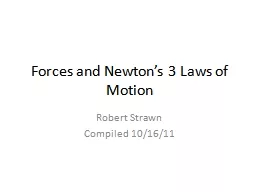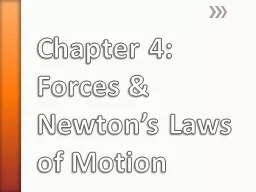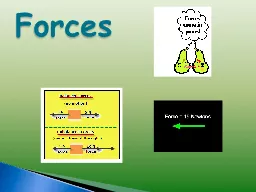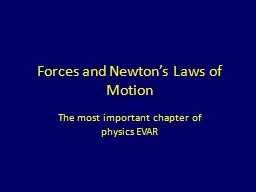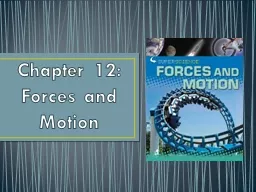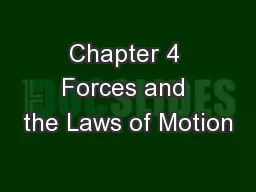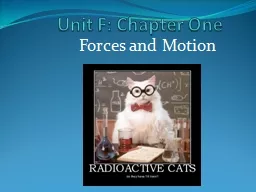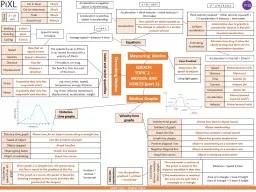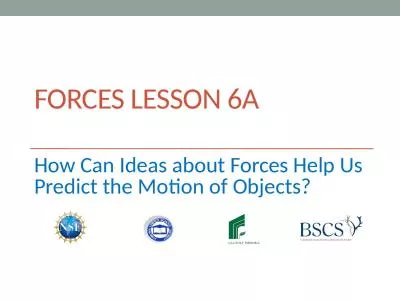PPT-Forces cause changes in motion.
Author : abigail | Published Date : 2022-02-15
A ball at rest in the middle of a flat field is in equilibrium No net force acts on it If you saw it begin to move across the ground youd look for forces that dont
Presentation Embed Code
Download Presentation
Download Presentation The PPT/PDF document "Forces cause changes in motion." is the property of its rightful owner. Permission is granted to download and print the materials on this website for personal, non-commercial use only, and to display it on your personal computer provided you do not modify the materials and that you retain all copyright notices contained in the materials. By downloading content from our website, you accept the terms of this agreement.
Forces cause changes in motion.: Transcript
Download Rules Of Document
"Forces cause changes in motion."The content belongs to its owner. You may download and print it for personal use, without modification, and keep all copyright notices. By downloading, you agree to these terms.
Related Documents

